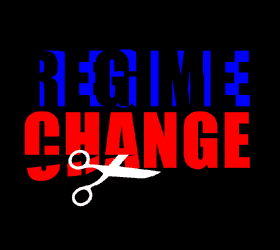A hot item bouncing around the Web today is a piece by Paul Graham, entitled The Age of the Essay. A polemic, a history, a guide — appropriately enough it meanders all over its subject. It even presents the etymology of the word “meander” (“Menderes” is a river in Turkey and yes, it winds all over the place). Musings on the influence of the Internet bring the piece to a stirring conclusion:
If there’s one piece of advice I would give about writing essays, it would be: don’t do as you’re told. Don’t believe what you’re supposed to. Don’t write the essay readers expect; one learns nothing from what one expects. And don’t write the way they taught you to in school.
The most important sort of disobedience is to write essays at all. Fortunately, this sort of disobedience shows signs of becoming rampant. It used to be that only a tiny number of officially approved writers were allowed to write essays. Magazines published few of them, and judged them less by what they said than who wrote them; a magazine might publish a story by an unknown writer if it was good enough, but if they published an essay on x it had to be by someone who was at least forty and whose job title had x in it. Which is a problem, because there are a lot of things insiders can’t say precisely because they’re insiders.
The Internet is changing that. Anyone can publish an essay on the Web, and it gets judged, as any writing should, by what it says, not who wrote it. Who are you to write about x? You are whatever you wrote.
Popular magazines made the period between the spread of literacy and the arrival of TV the golden age of the short story. The Web may well make this the golden age of the essay. And that’s certainly not something I realized when I started writing this.
Also off the wire today…
1) A discussion of the intimacy gradient, which attempts to apply concepts from architecture to improving what could be termed the emotional usability of online social spaces.
In architecture, an intimacy gradient exists when you start off in public areas and progress through semi-private to private and then intimate areas – consider a house with a porch, hallway, living room, bedroom, and increasing levels of privacy as you move through the building. This progression is something that we have all experienced and, on an unconscious level, we both understand and appreciate it. Removing it creates jarring and uncomfortable spaces that we prefer to avoid because, on an emotional level, it feels all wrong.
… A similar thing happens at conferences, with the public conference hall leading to semi-private groups congregating inbetween sessions, a semi-private back channel being opened (semi-private because not everyone at the conference will use it), and then private messages. These intimacy gradients are even more flexible, utilising different tools for difference sections of the gradient.
These are all emergent behaviours, they’re people using the tools at hand in a way that feels comfortable to them. A good example of an imposed/self-organising intimacy gradient is that used by Zoetrope. A website for film makers and writers, it has a public area and a private area which you need to register to access. That’s the imposed section. Once registered, users access the self-organised section where there are ‘public’ messageboards to which anyone can post, ‘private offices’ which require an invitation from the owner before access is granted but which are semi-private areas, and ‘z-mail’ which acts as a private messaging system.
2) Jill Walker had fun with her class yesterday.
Today the sun was shining so brilliantly that I scrapped the lecture plans and took my students to town to do field work instead. We collected photos of stickers, tags and street art, talked about viral marketing and art outside of galleries and then we fed our photos into Flickr, beginning to talk a bit about social networks and how people are developing more and more ways of organising the web, or of facilitating self-organisation.
If you aren’t familiar with Flickr, by all means check it out. It’s essentially an online photo service, but enhanced by all manner of social software goodies that allow for all sorts of groovy uses. A very hot service. (And it’s run by a Vancouver company!)

